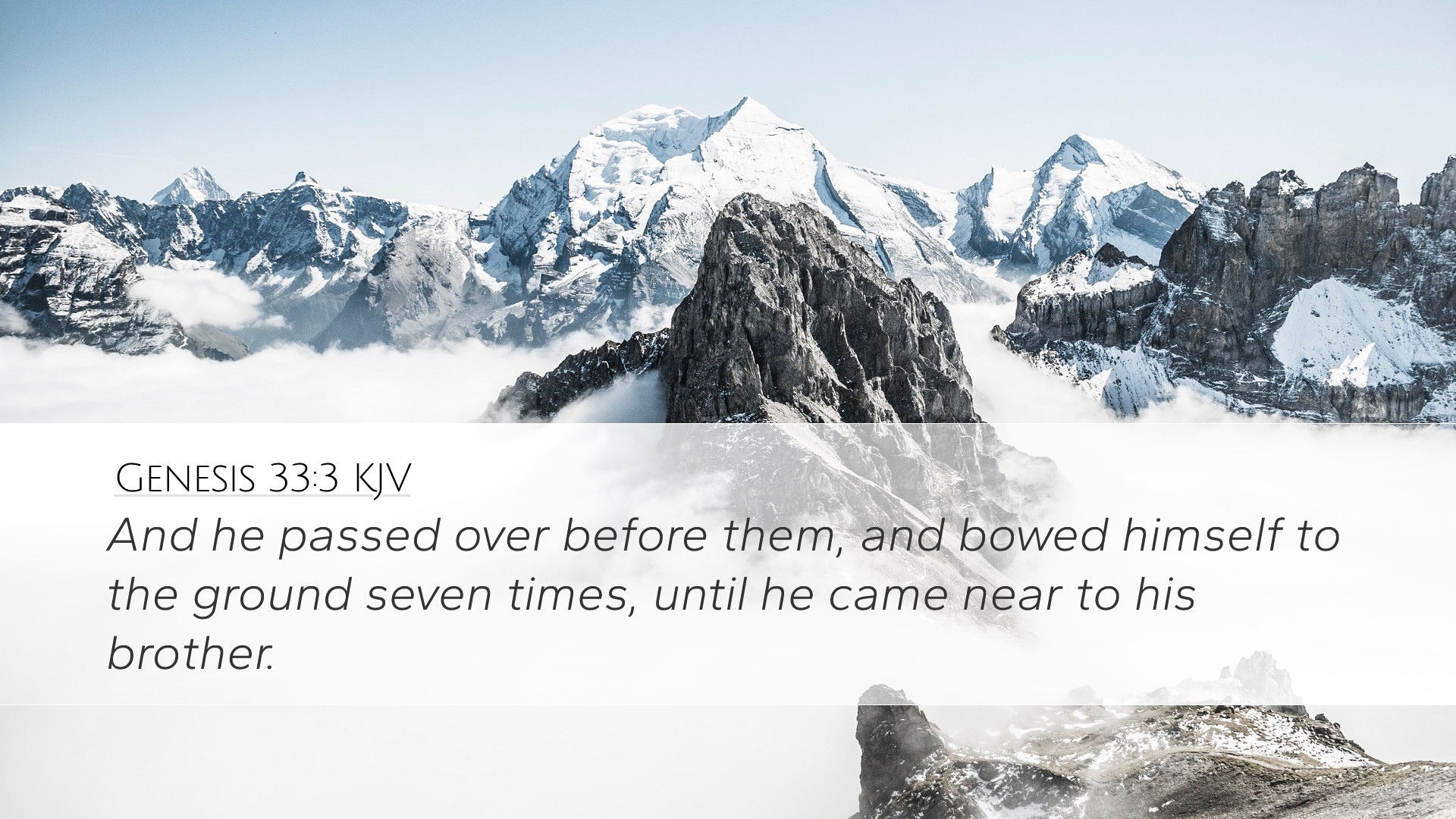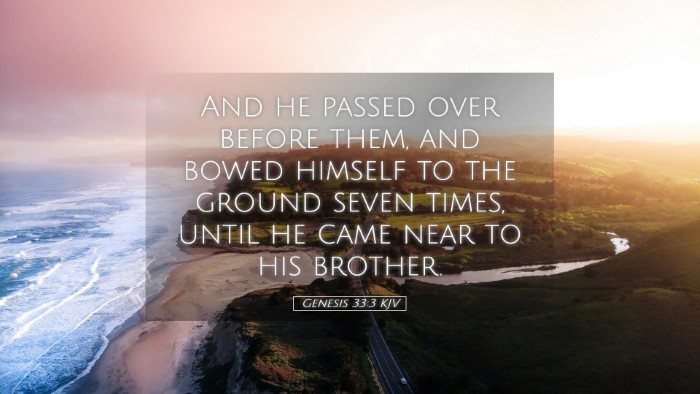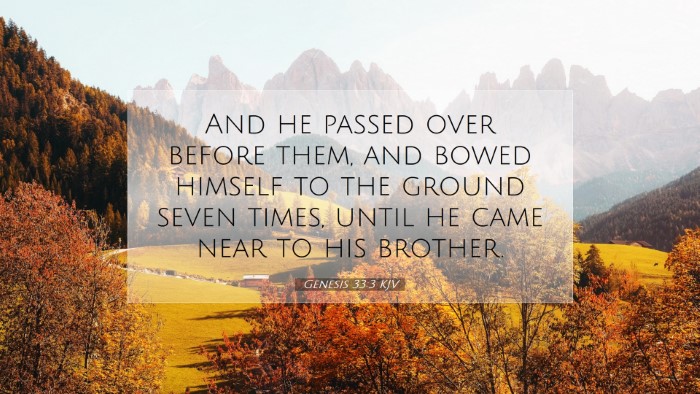Commentary on Genesis 33:3
Genesis 33:3: "And he passed over before them, and bowed himself to the ground seven times, until he came near to his brother."
Introduction
The encounter between Jacob and Esau in Genesis 33 is a pivotal moment in the biblical narrative, filled with deep emotional significance. This verse, Genesis 33:3, illustrates Jacob's humility and reconciliation after years of estrangement from his brother Esau. In this commentary, we draw insights from public domain commentaries by Matthew Henry, Albert Barnes, and Adam Clarke to elucidate the spiritual and practical implications of this verse for pastors, theologians, and Bible scholars.
Contextual Background
Genesis 33 marks a critical point in the story of Jacob. After fleeing from his brother Esau due to the conflict surrounding Jacob receiving the birthright and blessing, Jacob is uncertain about Esau’s reception. The previous chapter recounts Jacob's fear and his preparation for this meeting. He sends gifts ahead, anticipating hostility. This verse encapsulates his approach to reconciliation: humility and respect.
Interpretations of "Passed Over Before Them"
Matthew Henry notes that Jacob put himself at the front of his family, a gesture indicating his willingness to bear the brunt of any potential wrath from Esau. This act represents leadership characterized by humility rather than dominance.
The Significance of Bowing
The act of bowing seven times is loaded with meaning. According to Albert Barnes, the number seven represents completeness, suggesting Jacob’s total submission before Esau. This was not merely a formality but an expression of Jacob's deep-seated respect and desire for reconciliation.
Adam Clarke elaborates further on the cultural significance of such behavior, drawing attention to its implications in the ancient Near East. Bowing was a common practice indicating deference, and Jacob’s actions were a vital step in mending their broken relationship.
Theological Implications
Humility in Reconciliation
The humility exhibited by Jacob speaks powerfully to the themes of reconciliation and forgiveness central to biblical teaching. Matthew Henry emphasizes that true reconciliation requires humility; Jacob’s bowing reflects an understanding of his past wrongs and a desire to restore harmony. This is reminiscent of Christ's teaching on humility as a precursor to great leadership (Matthew 23:12).
Repentance and Restoration
Jacob’s approach to Esau may also signify a genuine repentance. By acknowledging his past misdeeds through physical acts of submission, Jacob mirrors the biblical principle that true repentance involves turning away from prior actions and seeking restoration (Luke 19:8-9).
Practical Applications
For Pastors and Leaders
Leaders are often faced with conflicts within their communities. The passage offers a model for addressing grievances constructively. Following Jacob’s example of humility, leaders can navigate conflicts through sincere acts of contrition and reconciliation, fostering unity within their congregations.
For Students and Scholars
Students of the Bible can glean insights on the importance of contextual analysis. The cultural practices surrounding submission and reconciliation in ancient times inform the reader about God’s overarching narrative of restoration throughout Scripture.
The Role of Preparation
This event did not occur in isolation; Jacob's extensive preparations demonstrate a proactive approach to conflict resolution. Scholars must consider how preparation for reconciliation plays a crucial role in the broader theme of divine providence within biblical narratives.
Conclusion
Genesis 33:3 is more than a historical account; it embodies principles of humility, repentance, and the transformative power of reconciliation. By studying Jacob’s actions toward Esau, believers are reminded of their own call to humility and restoration in their relationships, reflecting the love and grace of God in their lives. The commentaries by Henry, Barnes, and Clarke collectively emphasize the profound lessons embedded in this encounter, inviting readers to engage deeply with the text and apply its teachings in their own contexts.


